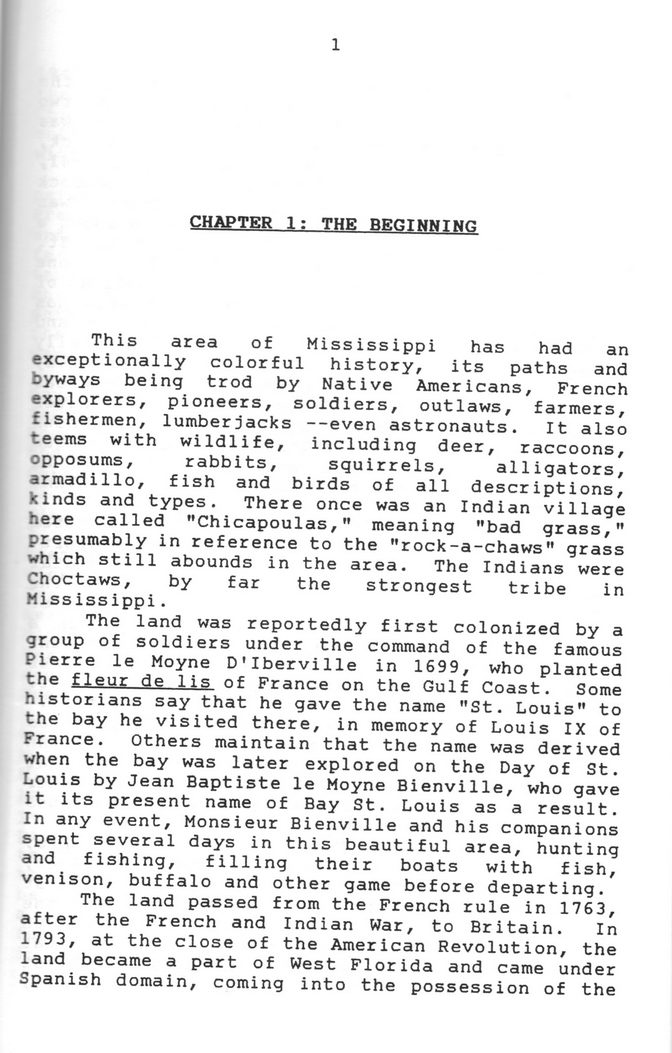This text was obtained via automated optical character recognition.
It has not been edited and may therefore contain several errors.
1 CHAPTER 1: THE BEGINNING This area of Mississippi has had an exceptionally colorful history, its paths and byways being trod by Native Americans, French explorers, pioneers, soldiers, outlaws, farmers, fishermen, lumberjacks --even astronauts. It also teems with wildlife, including deer, raccoons, opposums, rabbits, squirrels, alligators, armadillo, fish and birds of all descriptions, kinds and types. There once was an Indian village here called "Chicapoulas," meaning "bad grass," presumably in reference to the "rock-a-chaws" grass which still abounds in the area. The Indians were Choctaws, by far the strongest tribe in Mississippi. The land was reportedly first colonized by a group of soldiers under the command of the famous Pierre le Moyne D1Iberville in 1699, who planted the fleur de lis of France on the Gulf Coast. Some historians say that he gave the name "St. Louis" to the bay he visited there, in memory of Louis IX of France. Others maintain that the name was derived when the bay was later explored on the Day of St. Louis by Jean Baptiste le Moyne Bienville, who gave it its present name of Bay St. Louis as a result. In any event, Monsieur Bienville and his companions spent several days in this beautiful area, hunting and fishing, filling their boats with fish, venison, buffalo and other game before departing. The land passed from the French rule in 1763, after the French and Indian War, to Britain. In 1793, at the close of the American Revolution, the land became a part of West Florida and came under Spanish domain, coming into the possession of the

First Presbyterian Church History-of-the-First-Presbyterian-Church-05